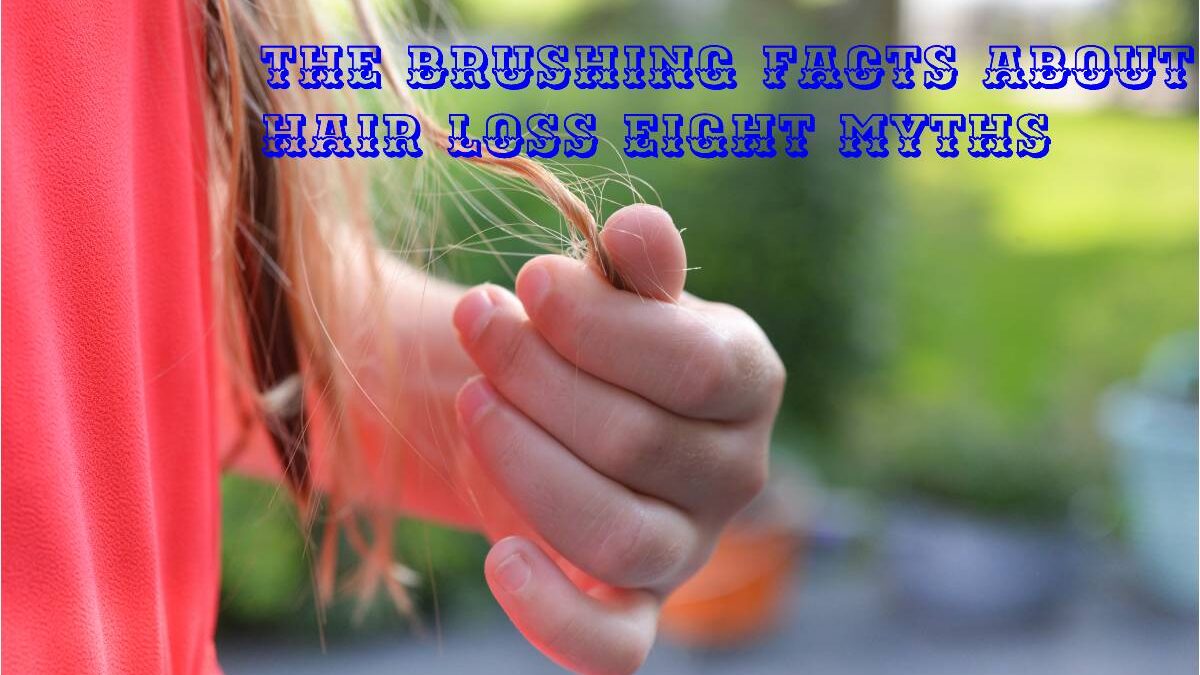You’re not the only one who has observed more hair than usual in your brush or that your ponytail isn’t as complete as it used to be. Over 50% of women do predict losing significant hair during their lifetimes.
Several factors could cause hair loss, which can be a highly stressful and traumatic experience. Female pattern hair loss, which affects almost 30 million women in the United States alone, is the most frequent cause of hair fall and thinning in women. However, other elements like age, diet, hair care routine, and even where you live can significantly impact your thinning hair.
The techniques that can also use to encourage hair growth include:
- Minoxidil topical treatments
- serums for scalp care made from plants
- shampoos for preventing hair loss
- Women’s hair-regrowth supplements
Myth 1: Hair loss only happens as you become older.
Most women over 40 have thinning hair at a higher rate, while stress and poor styling practices are the leading causes of hair fall in women in their 20s and 30s. During the reproductive years, female pattern baldness can start any time; extremely severe cases have even been seen in young girls just entering puberty. Hair loss might also start in your teens if you are genetically inclined to it.
Myth 2: Excessive hat use results in hair loss
There is no credible data that claims wearing hats contributes to balding or hair loss. Technically, traction alopecia, a slow hair fall caused by the repetitive stress of the hair follicles, is possible if you wear a very tight hat every day. Fortunately, it’s unlikely that you’ll even find a hat that little. Regularly using a hat can shield your scalp from the potentially hair-loss-causing UV rays. If you frequently wear a hat, ensure it is clean and comfortable to prevent bacteria and accumulation that could infect the scalp.
Myth 3: Permanent hair loss is the norm.
Despite being a genetic disorder, female pattern baldness is not the only condition that results in hair loss. Lifestyle changes can frequently stop hair fall if it is brought on by factors like stress, diet, or over-styling—unless the hair follicles have already sustained significant damage. The increased shedding of hairs during the telogen phase (the resting phase) following trauma, shock, or significant systemic stress is known as telogen effluvium, a major cause of hair falls in women—temporary hair falls result from this type. Strands will frequently regrow within a few months with adequate hair care and treatments.
Myth 4: Frequent trims make your hair grow thicker and faster.
Haircuts do not affect how thick or fast your hair grows. Hair strands grow from the follicles in the scalp; the rest of the strand is composing of dead skin cells. Whether you chop your hair short or let it grow out, the rate at which the cells renew themselves has nothing to do with your hairstyle.
Receiving a trim every six to eight weeks, you proactively prevent split ends from splitting the strand further up the shaft. It’ll keep the hair from looking stringy and make the appearance look full and healthy.
Myth 5: Daily hair washing makes it dreadful.
The general growth or loss of your hair strands is affected by how frequently you shampoo your hair. Because of this, even though you might notice the hair falling out more clearly while washing it, the hair would have done so otherwise. It’s best to clean your hair frequently if it’s overly greasy to prevent extra sebum (oil) from clogging the follicles.
Using gentle products and washing methods on the scalp and hair is crucial to prevent damage and irritation, even though your showering habits won’t always result in hair loss.
Myth 6: Removing grey hairs will encourage the creation of new hair.
Only new grey hair will develop in its place if grey hair pulls out. Only one-inch sets in each follicle; the adjacent hairs won’t go grey until the pigment cells in their follicles stop functioning. As a result, altering one strand or follicle will not influence those nearby. Plucking hairs can potentially traumatize the follicle, which, if done frequently, can result in infection, the development of scars, and potentially irreversible damage that can result in patches of baldness.
Myth 7: Only your mother’s side can predict hair loss.
For many years, genetic hair thinning does think inherited from the mother’s side of the family. Over 200 genes do, however, have a role in the control of hair fall. So, the problem is not solely coming from mom’s side. If you believe your hair loss is hereditary, look at your mother’s and father’s family trees and consider their hair history.
Myth 8: Taking certain supplements would completely cure hair loss.
Suppose you are deficient in specific vitamins (typically B vitamins like folate, biotin, riboflavin, and vitamin B12) or minerals like iron, zinc, or selenium, which is the cause of your hair loss. In that case, you should take oral supplements to make up for these deficiencies. Individuals with particular vitamin or mineral deficiencies may benefit from oral supplements to boost natural hair growth.

